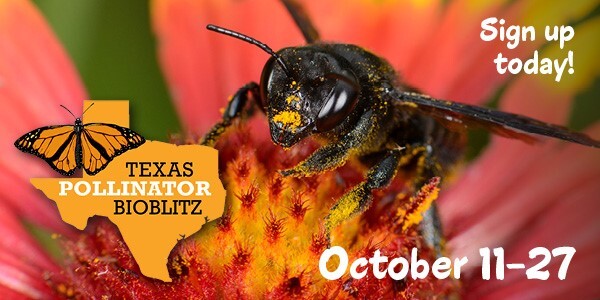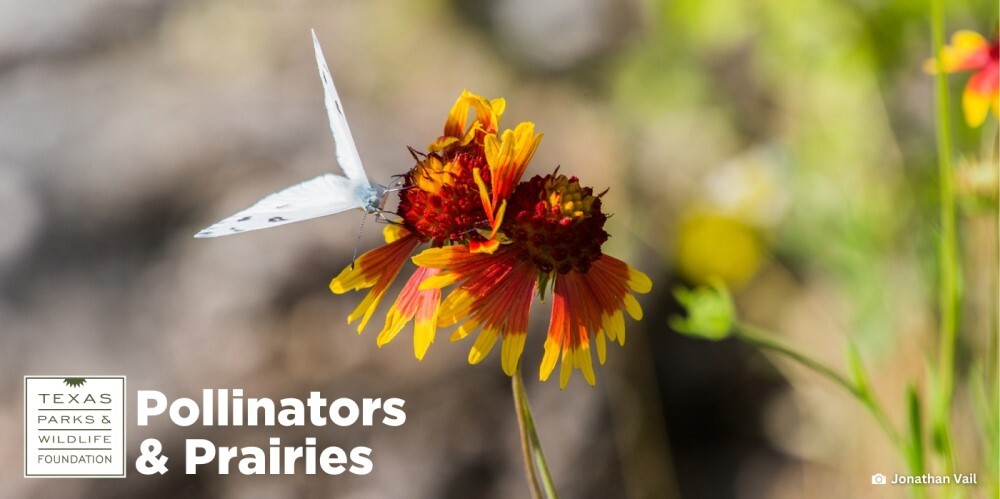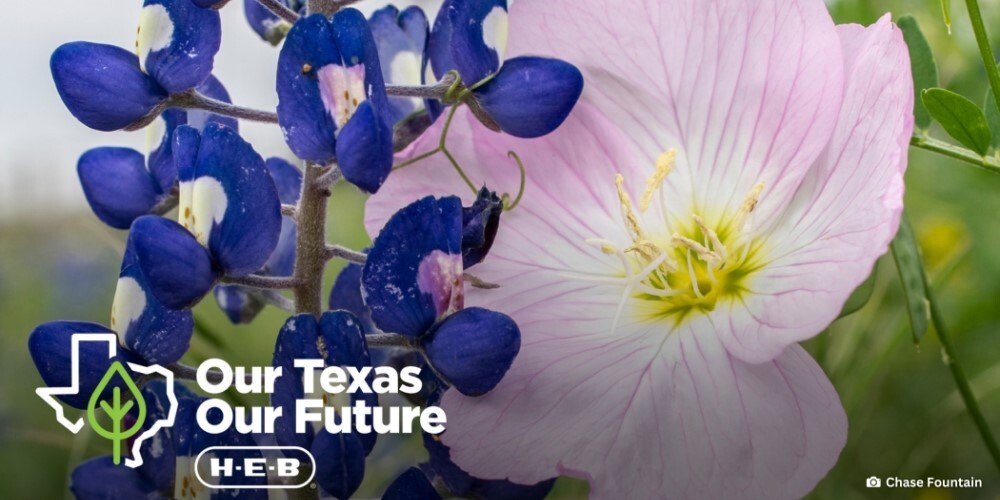Don't Miss the Pollinator Bioblitz!
 One of the best events of fall is the fun and free Texas Pollinator Bioblitz, happening Oct. 11-27. Join in this annual celebration by taking photos of pollinators like beetles, moths, bats, bees, hummingbirds, flies, wasps and butterflies, then posting them on social media or iNaturalist with #TxPollinators. Don't forget to check out what other Bioblitzers have found while you're there!
Other ways to join in:
-
Sign up for emailed prompts, like, "Find a striped pollinator."
- Join events near you. They're happening around the state, taking place day and night (nocturnal pollinators!).
The Pollinator Bioblitz is a great way to get out and enjoy the cool weather, see some things you may have never noticed before, and become part of the Pollinator Bioblitz community. We'll see you out there!
A message from our non-profit partner, Texas Parks and Wildlife Foundation:
Introducing TPWF’s New Pollinators & Prairies Program!
 Texas Parks and Wildlife Foundation (TPWF) is launching a new Pollinators & Prairies program to help native pollinators and prairies thrive.
Through Pollinators & Prairies, TPWF is working with dedicated conservation partners to increase healthy prairie habitat and pollinator populations, encouraging Texans to plant native grasses and wildflowers, and funding critical research to guide management strategies for our vital pollinators.
“We are delighted to collaborate with our many conservation partners on the ground to make a difference for pollinators and prairies in Texas,” said TPWF Executive Director Anne Brown.
The program is generously supported by presenting sponsor H-E-B, with additional support from Phillips 66.
A message from our non-profit partner, Texas Parks and Wildlife Foundation:
 This week marks Native Plant Week in Texas, and H-E-B is celebrating by featuring a diverse array of Texas native plants at 200+ stores from October 14-30. TPWF and the Native Plant Society of Texas (NPSOT) have teamed up with H-E-B to encourage Texans to plant native wildflowers and grasses for pollinators.
Pick up a free pocket prairie seed mix packet at one of 18 select H-E-B stores on Sat., Oct. 19, from 11:00 a.m.-2:00 p.m., and NPSOT volunteers will be there to answer your questions about pollinator gardening.
|
